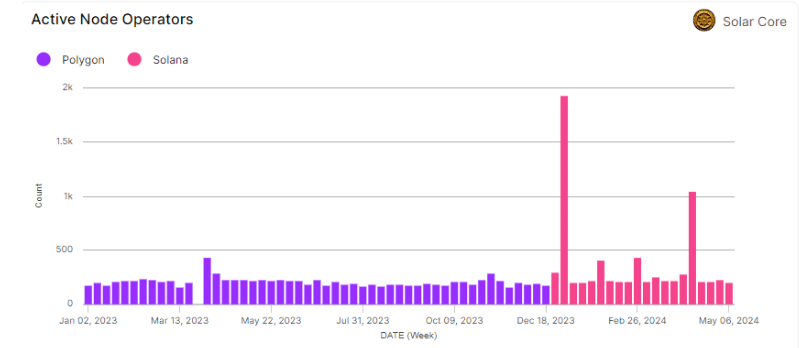Flipside’s new report revealed that Render Network and Helium Network have emerged as Solana’s DePIN sector leaders.
Decentralized Physical Infrastructure Network (DePIN) leverages decentralized, community-powered networks to enhance infrastructural efficiency and resilience, particularly for industries like AI and data storage. By incentivizing decentralized services, DePIN unlocks a wide array of use cases within and beyond the Web3 space.
According to the Flipside report, Solana has emerged as a leading platform for DePIN projects owing to its high-speed transactions, low costs, and robust infrastructure.
“DePINs rely heavily on community participation since they are decentralized hardware networks,” Garrison Yang, chief strategy & marketing officer at io.net said in the report. “It’s no surprise that many of these projects, including io.net, are choosing the fastest growing ecosystem in crypto — Solana.”
Render Network leads decentralized compute
Render Network is at the forefront of decentralized GPU rendering, offering scalable, cost-effective computing power for AI, media rendering, and scientific research.
Since migrating to Solana in November 2023, Render Network has rendered approximately 33 million frames, equivalent to around 33,000 GPU hours, using NVIDIA RTX 3090 GPUs.

Active Render node operators peaked at 1,900 in January 2024, marking a 66.3% increase since the Solana migration. The growth can be attributed to the enhanced awareness of Render’s capabilities and Solana’s supportive ecosystem. Node operator rewards saw a 34.3% increase post-migration, reaching a peak of 228,000 RNDR in early January 2024.
Render’s new Burn and Mint Equilibrium (BME) mechanism has created a stable environment for RNDR burns, effectively balancing supply and demand dynamics. However, competition within the decentralized computing space has intensified, potentially impacting Render’s market share.
Helium’s mobile sector surges ahead
Helium Network, the world’s largest decentralized network, has experienced significant growth, particularly in its mobile network sector. Token burns for Helium’s mobile network now vastly outnumber those of the IoT network, driven by the rapid adoption of Helium Mobile services.

Helium Mobile subscribers peaked at nearly 90,000 in January 2024, supported by competitive pricing and MOBILE token incentives.
Helium’s Mobile Discovery Rewards have accelerated since December 2023, outpacing new subscriber growth. The increase is linked to enhanced reward mechanisms and a crackdown on fraudulent activities, ensuring genuine contributors receive substantial rewards.
Recent offerings, including Group Plans, Hex Boosting, and an international roaming add-on, have further bolstered Helium Mobile’s appeal. Helium’s partnership with Telefonica to expand coverage to Mexico also showcases its growing influence.
While Helium continues to dominate the decentralized connectivity space, several smaller projects are also making notable strides. WiFi Dabba provides affordable, high-speed internet access in India through a network of micro-ISPs and blockchain-based payment systems.
Pollen Mobile enables users to set up and operate their own secure and private cell networks. Meanwhile, Uprock is creating a gamified peer-to-peer network that allows users to store, access, and share data, earning rewards for various contributions to the ecosystem.
